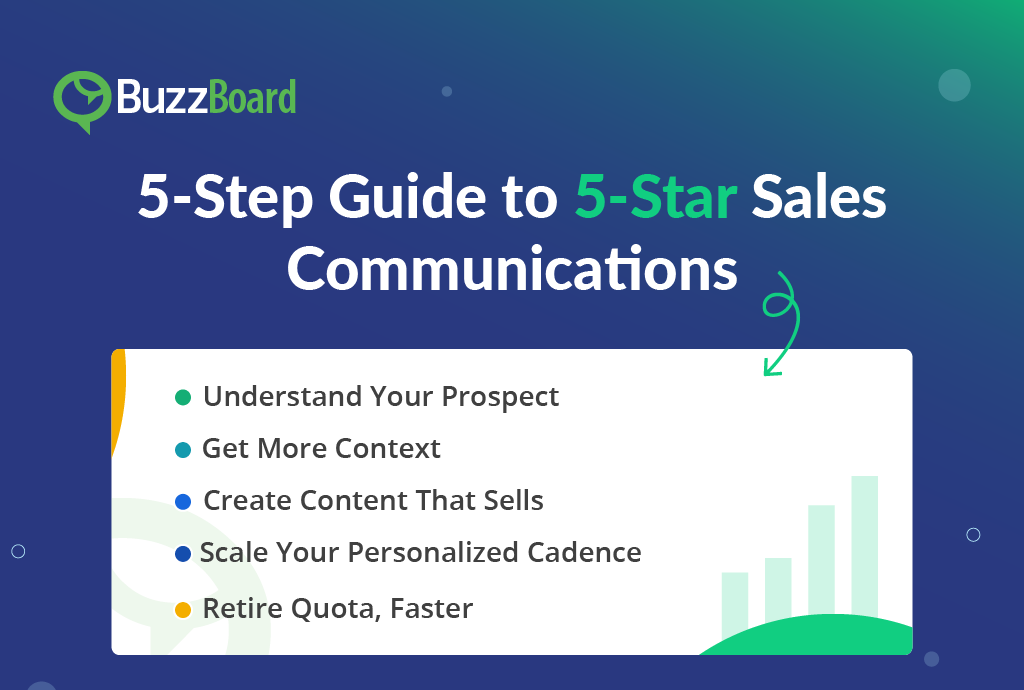Remember the heartfelt conversation between astronaut Dave Bowman and the HAL 9000 supercomputer in 2001: A Space Odyssey? While that conversation didn’t end well, the movie’s depiction of software that could talk to humans is becoming our reality – and that’s good news for sales, marketing and customer experience teams.
Communications vs Conversations
As consumers and B2B decision-makers face a growing list of options, sales, marketing and customer success teams are increasingly expected to initiate, nurture and maintain conversations with countless individuals.
While we’ve had technology to communicate with all of these people, conversations require a customized, two-way dialogue. Until recently, conversations simply haven’t been scalable. That’s where the next generation of AI-powered machines come in.
Redefining Conversations
We may think of a conversation as a talk between humans, but that description is no longer accurate. The intersection of online shopping platforms, messaging apps, and voice recognition have led to the rise of conversational commerce. These conversations are entirely maintained by software, or automatically handed off to a human once a qualification or other milestone has been met.
Who wants to have a conversation with a machine? Well, the early indications are that just about everybody is happy to have a chat with a bot.
The Rise of Conversational Commerce
In a recent CIO article, 1-800-Flowers.com CEO Chris McCann discussed their growing use of conversational commerce, and their surprise at the overwhelmingly positive customer reaction.
But don’t customers miss the, well, human experience of communicating with a human? Not according to McCann. They respond to the machine just like they’re talking with a person.
Here are just a few examples of how companies are using machine-enabled conversations:
- Google Home: “Good morning Google Home” triggers a recap of your day’s schedule and news headlines.
- Amazon Echo: In addition to voice-assisted shopping, a partnership with Capital One enables Echo to answer a customer’s inquiries about their balance and recent transactions, and even make payments.
- Waze Planned Drives: Takes expected traffic conditions and other inputs to alert you when it’s time to leave for your appointment.
- Staples Enhanced Easy Button: An intelligent ordering ecosystem that helps Staples’ business customers order supplies using voice, text, or emails from a variety of devices.
- LinkedIn Messaging: The “Conversation Starters” tool gives users prompts to initiate interactions with other members.
But machine-enabled conversations aren’t suitable only for serving customers more efficiently. They’re also an astoundingly effective new tool for turning more people into customers.
Sales-Boosting Conversational Tech
While the bulk of tech for sales and marketing has focused on an infrastructure to make communications and processes more efficient, investments in machine-enabled conversations has become a focus for many companies.
That’s because we all respond better to a personalized conversation, and software is making this possible for virtually every prospect.
AI advancements supporting these machine-enabled conversations include:
- Natural Language Processing: companies like Convserica are incorporating natural-language processing into emails that can contact prospects and nurture leads.
- Automated Composition Engines: collect data from a variety of sources, assemble and deliver information in easy-to-read documents.
- Conversational Intelligence: analyzes recordings of sales calls to report metrics like the talk-to-listen ratio, number of engaging questions and adherence to the playbook.
- Signal Monitoring: BuzzBoard collects data that reflects changes to a prospect’s business performance, tech stack or marketing activity to identify needs and match them to the company’s solutions. At this point, sales is notified of the opportunity, and even given suggested content to initiate a conversation.
20/20 Foresight
Although it’s early, we’ve undeniably entered the age of conversational commerce. In fact, Gartner has made some predictions expected to occur by 2020 that show just how quickly we’re progressing:
- Machines will author 20% of all business content.1
- Customers will manage 85% of their relationship with a company without interacting with humans.2
- Most people will have more conversations with bots than with their spouses.3
Who Will Be Talking to Your Customers?
If you still think of conversations strictly as interactions between humans, it’s time to change your thinking. It’s time to invite machines into the conversations you have with your customers and prospects. It’s a competitive advantage you simply can’t afford to ignore.
Because you can be certain that machines will be doing plenty of the talking for your competitors – and doing it quite well.
- “Gartner’s Top Strategic Predictions for 2016 and Beyond: The Future Is a Digital Thing,” Oct 2015.
- “Gartner 360 Customer Summit,” 2011.
- “Gartner’s Top 10 Strategic Predictions for 2017 and Beyond: Surviving the Storm Winds of Digital Disruption,” Oct 2016.








